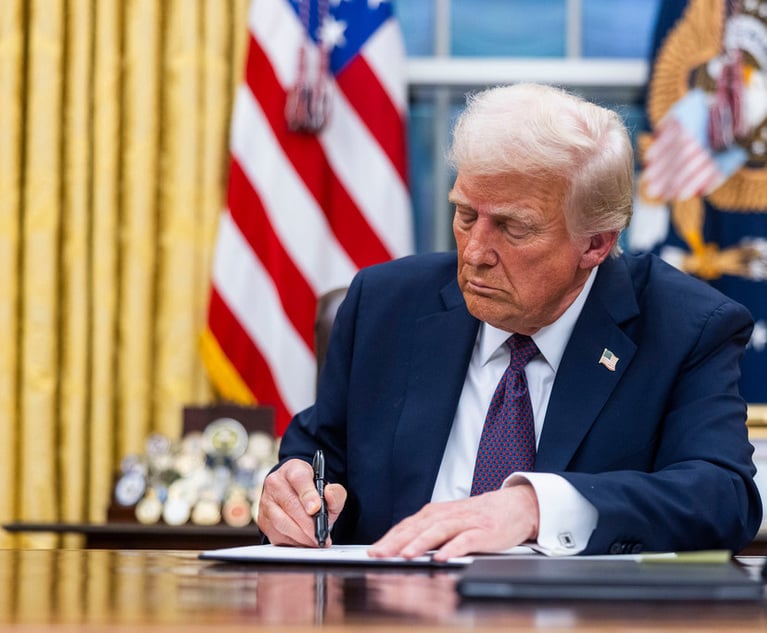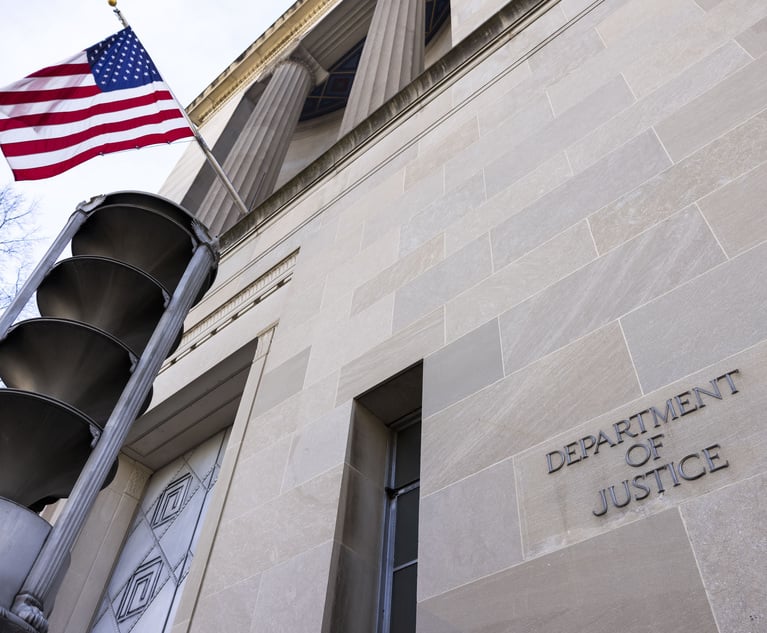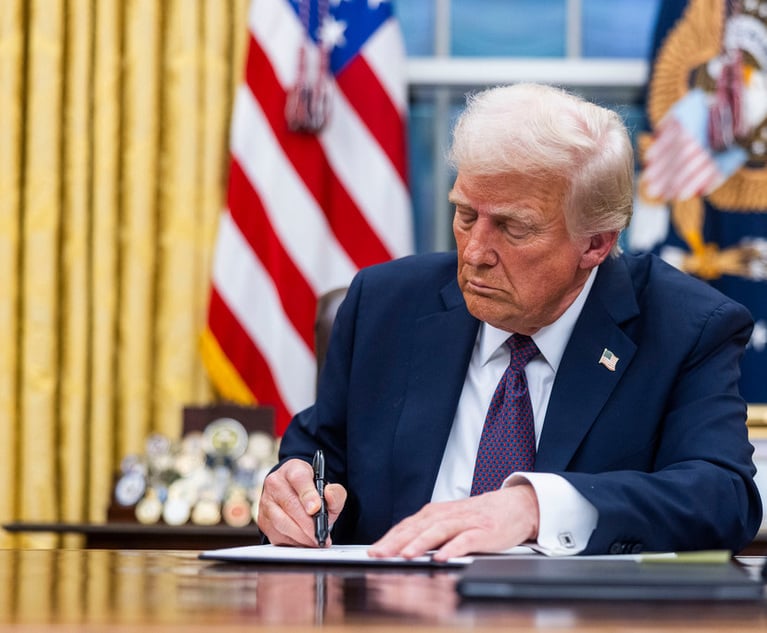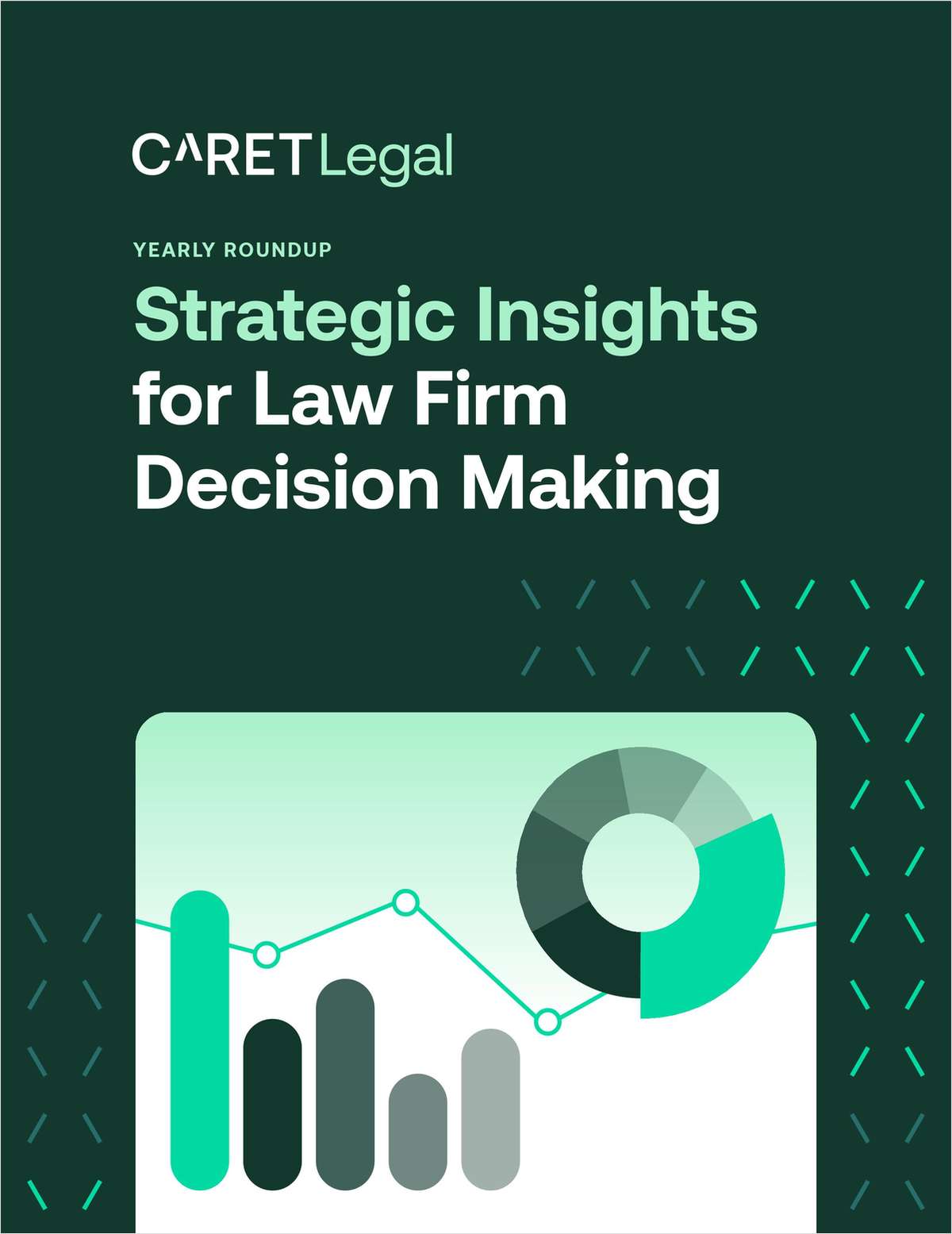Escaping Price Impact Purgatory
Leading up to the Supreme Court's decision in Halliburton Co. v. Erica P. John Fund, the securities bar waited in great suspense to see whether the Court would overrule the "fraud-on-the-market" presumption of reliance established many years earlier in Basic v. Levinson. District courts have, however, struggled applying Halliburton.
June 27, 2019 at 05:41 PM
5 minute read
 U.S. Court of Appeals for the Second Circuit
U.S. Court of Appeals for the Second CircuitLeading up to the Supreme Court's decision in Halliburton Co. v. Erica P. John Fund, the securities bar waited in great suspense to see whether the Court would overrule the "fraud-on-the-market" presumption of reliance established many years earlier in Basic v. Levinson. Under that presumption, shareholders pursuing federal securities law claims do not have to show reliance on each alleged misstatement if the shares at issue traded in an efficient market. In an efficient market, it is presumed that all material, publicly available information about a company is reflected in its stock price and therefore shareholders need only rely on the trading price when deciding to purchase.
Ultimately, the Court declined to overturn Basic, but held that defendants can rebut the presumption at class certification by showing the alleged misrepresentations had no impact on the stock's price. District courts have, however, struggled applying Halliburton. Significant questions linger regarding the process of rebutting the presumption such as what evidence is sufficient to rebut the presumption and, most importantly, what effect should Halliburton have on the plaintiffs' so-called "price maintenance" theory?
According to the price maintenance theory, a misrepresentation can "impact" the trading price, even if it does not change that price at all, either because it confirms market expectations or prevents the price from falling. It is frequently the case that plaintiffs seek to recover for statements that result in no price change or a downward movement in price. When a court is willing to entertain the price maintenance theory without requiring plaintiffs to come forward with empirical evidence justifying its application, it makes it hard for defendants to successfully rebut the presumption. The Court's silence in Halliburton on what specific type of evidence rebuts the presumption has created an uncertain path for district courts to navigate, and too often defendants are left trying to disprove price maintenance—a legal fiction for which plaintiffs offer no concrete proof. In reality, all defendants should have to do is come forward with any evidence that severs the link between the alleged misstatement and the stock price. Evidence that the statement literally had no impact on the trading price of the stock or had a negative impact should suffice.
It has taken some time for price impact cases to reach the circuit court level. The Eighth Circuit in IBEW Local 98 Pension Fund v. Best Buy was the first appellate court post-Halliburton to hold that the presumption had been successfully rebutted. Best Buy involved two statements made on the same day. The defendants offered evidence showing that the price went up after the first alleged misstatement (which was deemed nonactionable) but not after the second one. Plaintiffs' experts argued that the second statement "maintained" the inflation and evidence of this inflation could be found in the price decline that occurred after plaintiffs claimed the "truth" was finally revealed. The Eighth Circuit reversed certification and found that Best Buy rebutted the presumption through evidence that there was no price reaction to the second statement and the fact that the second statement said nothing new. In so ruling, the court of appeals rejected the notion that plaintiffs can overcome no "front-end" price impact simply by arguing that a later decline must mean some actionable inflation was being maintained.
The Second Circuit has also been asked to weigh in on these issues. In Arkansas Teacher Retirement System v. Goldman Sachs Group, the Second Circuit vacated certification because the district court required defendants to "conclusively" show a "complete absence of price impact" instead of applying the preponderance of the evidence standard. The district court also erred by refusing to consider defendants' evidence that the stock price did not drop on 34 dates when the very information plaintiffs contend was concealed from investors was publicly disclosed. Thus, in addition to facing the issue of no upward price movement from the alleged misstatements, the plaintiffs in Goldman Sachs also faced the problem that the alleged "truth" underlying their nondisclosure claims was revealed to the market on several days with no price impact prior to their alleged corrective disclosure days. This means that the later price decline on the corrective disclosure days must have been caused by something else. In an efficient market, the price should not react to the same information twice.
After remand, the district court recertified the class, and Goldman again appealed to the circuit court. Notable amici, including the U.S. Chamber of Commerce, former SEC officials, law professors and economists, and the Securities Industry and the Financial Markets Association added their voices protesting the "impossible standard" defendants are expected to meet where direct evidence of no price impact is disregarded in favor of the unproven assumption that price inflation was being maintained. This second appeal is now fully briefed, and oral argument was scheduled for late June. With this latest appeal, the Second Circuit will hopefully take on plaintiffs' typical practice of invoking price maintenance whenever defendants offer evidence of no front-end price impact.
Susan E. Hurd is a partner in Alston & Bird's securities litigation group. She has more than 25 years of experience representing companies and their executives in securities class actions, derivative cases and merger litigation across the country. Courtney Quirós is a senior associate at Alston & Bird. Her practice focuses on securities fraud class actions, shareholder suits and corporate investigations.
This content has been archived. It is available through our partners, LexisNexis® and Bloomberg Law.
To view this content, please continue to their sites.
Not a Lexis Subscriber?
Subscribe Now
Not a Bloomberg Law Subscriber?
Subscribe Now
NOT FOR REPRINT
© 2025 ALM Global, LLC, All Rights Reserved. Request academic re-use from www.copyright.com. All other uses, submit a request to [email protected]. For more information visit Asset & Logo Licensing.
You Might Like
View All
Dissenter Blasts 4th Circuit Majority Decision Upholding Meta's Section 230 Defense
5 minute read
Government Contracting Clients Look to Firms to Stay on Top of Trump Policy Changes
4 minute read
'A Shock to the System’: Some Government Attorneys Are Forced Out, While Others Weigh Job Options
7 minute read
After Shutting USAID, Trump Eyes Department of Education, CFPB
Trending Stories
- 1Judge Finds Trump Administration Violated Order Blocking Funding Freeze
- 2CFPB Labor Union Files Twin Lawsuits Seeking to Prevent Agency's Closure
- 3Crypto Crime Down, Hacks Up: Lawyers Warned of 2025 Security Shake-Up
- 4Atlanta Calling: National Law Firms Flock to a ‘Hotbed for Talented Lawyers’
- 5Privacy Suit Targets Education Department Over Disclosure of Student Financial Data to DOGE
Who Got The Work
J. Brugh Lower of Gibbons has entered an appearance for industrial equipment supplier Devco Corporation in a pending trademark infringement lawsuit. The suit, accusing the defendant of selling knock-off Graco products, was filed Dec. 18 in New Jersey District Court by Rivkin Radler on behalf of Graco Inc. and Graco Minnesota. The case, assigned to U.S. District Judge Zahid N. Quraishi, is 3:24-cv-11294, Graco Inc. et al v. Devco Corporation.
Who Got The Work
Rebecca Maller-Stein and Kent A. Yalowitz of Arnold & Porter Kaye Scholer have entered their appearances for Hanaco Venture Capital and its executives, Lior Prosor and David Frankel, in a pending securities lawsuit. The action, filed on Dec. 24 in New York Southern District Court by Zell, Aron & Co. on behalf of Goldeneye Advisors, accuses the defendants of negligently and fraudulently managing the plaintiff's $1 million investment. The case, assigned to U.S. District Judge Vernon S. Broderick, is 1:24-cv-09918, Goldeneye Advisors, LLC v. Hanaco Venture Capital, Ltd. et al.
Who Got The Work
Attorneys from A&O Shearman has stepped in as defense counsel for Toronto-Dominion Bank and other defendants in a pending securities class action. The suit, filed Dec. 11 in New York Southern District Court by Bleichmar Fonti & Auld, accuses the defendants of concealing the bank's 'pervasive' deficiencies in regards to its compliance with the Bank Secrecy Act and the quality of its anti-money laundering controls. The case, assigned to U.S. District Judge Arun Subramanian, is 1:24-cv-09445, Gonzalez v. The Toronto-Dominion Bank et al.
Who Got The Work
Crown Castle International, a Pennsylvania company providing shared communications infrastructure, has turned to Luke D. Wolf of Gordon Rees Scully Mansukhani to fend off a pending breach-of-contract lawsuit. The court action, filed Nov. 25 in Michigan Eastern District Court by Hooper Hathaway PC on behalf of The Town Residences LLC, accuses Crown Castle of failing to transfer approximately $30,000 in utility payments from T-Mobile in breach of a roof-top lease and assignment agreement. The case, assigned to U.S. District Judge Susan K. Declercq, is 2:24-cv-13131, The Town Residences LLC v. T-Mobile US, Inc. et al.
Who Got The Work
Wilfred P. Coronato and Daniel M. Schwartz of McCarter & English have stepped in as defense counsel to Electrolux Home Products Inc. in a pending product liability lawsuit. The court action, filed Nov. 26 in New York Eastern District Court by Poulos Lopiccolo PC and Nagel Rice LLP on behalf of David Stern, alleges that the defendant's refrigerators’ drawers and shelving repeatedly break and fall apart within months after purchase. The case, assigned to U.S. District Judge Joan M. Azrack, is 2:24-cv-08204, Stern v. Electrolux Home Products, Inc.
Featured Firms
Law Offices of Gary Martin Hays & Associates, P.C.
(470) 294-1674
Law Offices of Mark E. Salomone
(857) 444-6468
Smith & Hassler
(713) 739-1250








